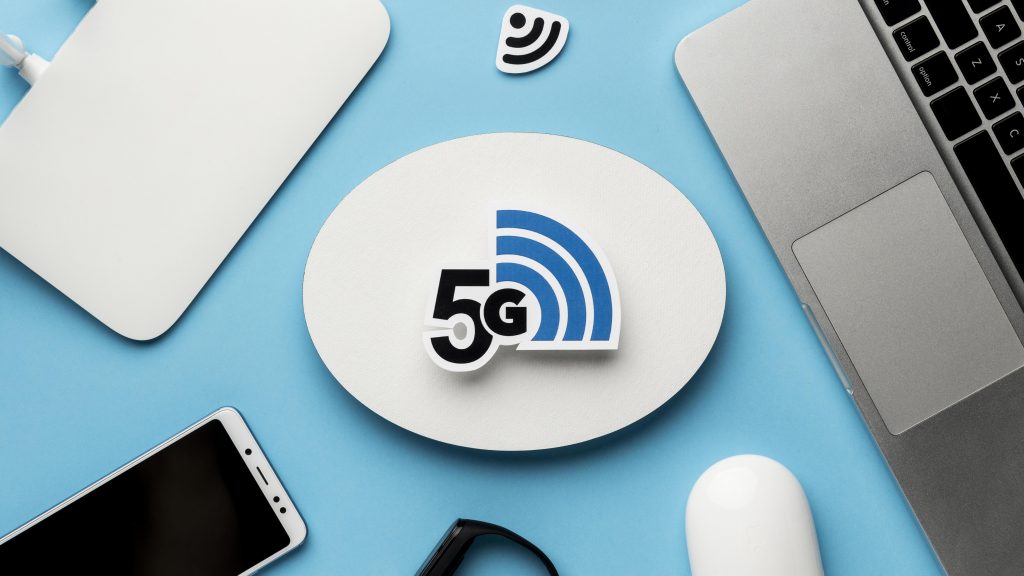
Whilst many providers have been working for some time now to take advantage of the benefits afforded by the latest 5G services, there are many who still have some questions about the solution.
We spoke to Cloudcell Technologies’ Managing Director Kevin Boyle and Technical Director Steve Bryant about some of the more frequently asked questions about 5G, and their respective answers.
Can we get 5G?
“The rollout of 5G by all networks is now gaining momentum, but as a general rule it’s still only currently available in the UK’s larger cities and towns. All operators are continuing to invest in the rollout and we will see an ever-expanding footprint over the coming months and years,” comments Boyle.
Due to this rollout strategy, those who are in a larger city or town can expect to see at least one, if not multiple operators providing 5G coverage, but perhaps less availability in more rural areas for the time being.
How fast is it?
Advertised as faster and more reliable with lower latency, the speed of 5G is a key differentiator from 4G services, but that speed isn’t always there.
“Whilst the advertised speeds of 5G run into the hundreds of Mbps, from our practical experience so far, the available speed of 5G is very much dependent upon location,” answers Bryant.
“Our tests have generally shown download speeds of between 200 and 300 Mbps and upload speeds of between 20 to 30 Mbps, however, in some large cities such as London and Manchester, we have experienced far lower speeds at about 100 Mbps.”
“These lower speeds tend to be a result of congestion due to the increasing number of 5G users and insufficient connectivity to a cell tower site, as the network operators and service providers need to continue investment in backhaul,” he concludes.
What’s available if 5G isn’t?
Not yet readily available everywhere, Boyle and Bryant have often been asked what the alternative to 5G is.
“In most UK locations where 5G is not yet available, there is now access to advanced 4G services, which can often provide very fast broadband service,” says Boyle.
“While this service will be fast and dependable, it will lack the advanced capabilities and attributes of 5G services, such as ultralow latency, but the performance offered is still impressive for many applications.”
“As providers work to increase the availability and scope of 5G, there is also the possibility of using 4G+ (LTEA) which aggregates multiple 4G connections to provide improved performance of between 100 and 200 Mbps download,” Boyle adds.
What’s the closest to 5G performance I can get without 5G?
For those who are attracted to the capabilities and performance of 5G, finding out their area is not yet covered can be disappointing, but the good new is, in Boyle and Bryant’s experience, not all is lost.
“Through intelligent engineering and utilisation of the latest, evolving technologies, a very fast broadband service can still be provided, even if it appears that 5G is not available at a particular location,” comments Boyle.
“For example, the latest high powered directional antennas often provide the reach to access 5G services on the periphery of serviced cities and towns,” adds Bryant.
“The antenna technology is significantly more advanced in these devices than that of a mobile phone handset or dongle, so 5G service may actually be available, even if you can’t get it on the mobile itself,” states Bryant.
“Equally, 4G technologies continue to see investment and advanced developments. The latest modems allow 4G – LTEA which can allow aggregation of up to 4 cell tower services into a single speed service.”
“Also, technology is now available to allow the aggregation of 5G and 4G services which has seen services delivered in excess of 400Mb/s during recent testing,” adds Boyle.
Can I access 5G inside?
To many, 5G is a service that’s primarily used outdoors, the capability for it to work indoors is there, but performance can depend on the building.
“5G is accessible inside buildings, but the performance of the service will very much depend upon the construction of the building,” begins Boyle.
“Due to the higher frequency ranges (3400 – 3800 Mhz) used for 5G compared to 4G (600 – 2600 Mhz), some building types will struggle to support 5G inside without support of internal solutions.”
“The use of external antennas often helps optimise the 5G experience within a building and allows the higher native speeds to be presented within the building itself,” Boyle surmises.
As the rollout of 5G continues, and coverage expands, Boyle and Bryant are sure that more questions will arise, but they’re also confident that the answers will too.
“With all providers invested in not only the rapid rollout of 5G, but also the continued advancement of 4G and 4G – LTEA technology, 5G will only increase in prevalence and be backed up and complemented by comprehensive 4G service support.”